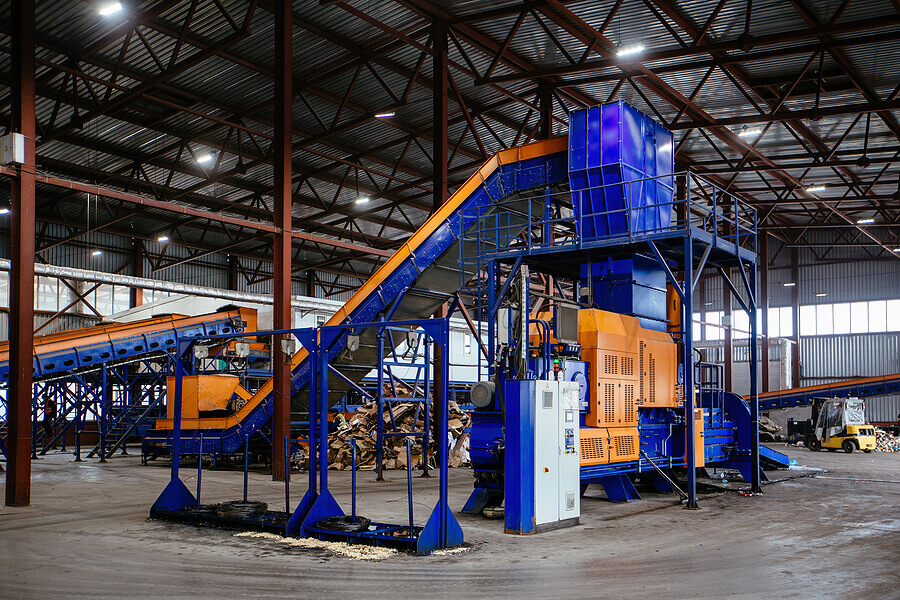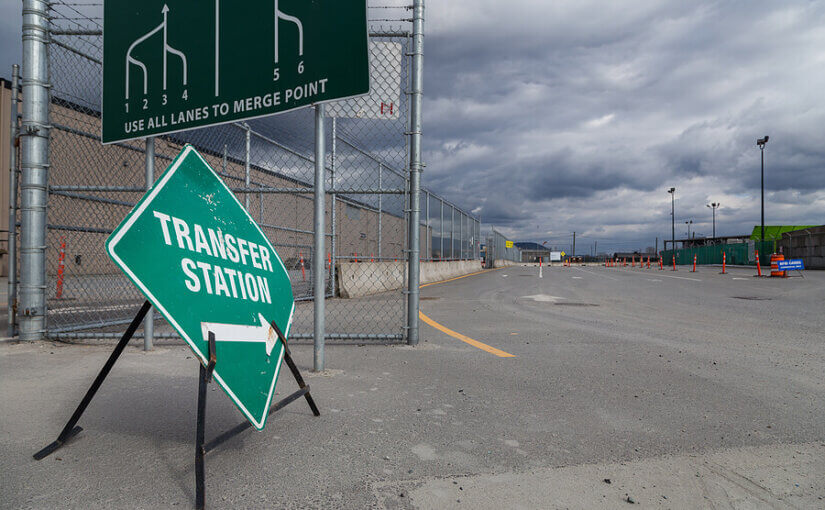A waste transfer station is where waste from several sources is collected before being transferred to a final disposal facility.
For many waste management companies, waste transfer stations are a midway point during the waste stream. Once rubbish is consolidated, it’s forwarded to landfill sites, waste-to-energy facilities, or recycling centres for further processing.
You’ll find a land area dedicated to collecting waste from various destinations at a waste transfer station. Large vehicles arrive to unload their rubbish, which is then screened and processed to determine the correct disposal method.
Waste transfer stations effectively function as temporary storage and sorting facilities, ensuring all waste ends up in the best possible location with the least environmental impact.
Waste transfer stations vs material recovery facilities
Waste disposal transfer stations and material recovery facilities (MRF) are often used interchangeably. However, there are some differences.
While vehicles to a waste transfer station typically arrive with unsorted rubbish, waste generally arrives at an MRF separated into different types.
MRFs focus on recycling and usually process items for future reuse. Although waste transfer stations also identify rubbish for recycling, they also contribute to landfill waste.
How does a waste transfer station work?

From initial unloading to final transportation, items at a waste transfer station go through a detailed sorting and evaluation process.
- Waste arrives — When vehicles arrive at the waste transfer station, they are loaded onto a scale and weighed. This starts the data reporting process and leads the Waste Transfer Notes, allowing continuous tracking.
- Tip and process — The waste is unloaded from vehicles and screened so empty vehicles and skips can be reassigned for reuse. Hazardous materials are identified and removed from the stream, and the remaining items are divided depending on their recyclability, size or material properties. Specialist machinery handles this process, identifying soils and aggregates. Recyclable items are picked manually.
- Waste reloaded — Sorted waste is compacted for efficiency and reloaded into larger transport vehicles.
- Transported and moved on — The waste is transported to other recycling, processing, or landfill sites.
Can anyone use a waste transfer station?
Some waste transfer stations are open to the public for general household waste or DIY rubbish. However, this varies from site to site.
Other stations only accept items from businesses or may require a small charge for specific waste types. Many stations only allow unloading from larger vehicles, such as vans or skip lorries.
Contact your local waste transfer station for information on site rules, costs, and accepted waste types.
When you hire a skip, your skip hire company will collect the full container and transport it to a nearby waste transfer station for sorting and processing.
Waste transfer station benefits
There are several benefits of a waste disposal transfer station, the facilities being vital tools for effective and cost-efficient waste management.
Reduce transport times and costs
You’ll find waste transfer stations in hundreds of locations throughout the country. These smaller yet more frequent facilities help reduce road travel, as vehicles spend less time travelling to disposal sites.
Less time on the road means reduced air pollution, fewer transportation costs, and more efficient use of company time — fleets can complete trips faster and fit in more unloading runs.
Convenient for public
Some waste transfer stations are available for public use, so residents have a convenient place to take their rubbish. This encourages people to spend more time separating their items, increasing recycling and putting less pressure on landfill sites.
Boost recycling
Waste transfer stations provide an efficient space to store and sort rubbish. As a result, more items are identified for recycling or reuse, promoting a more environmentally friendly waste stream.
Intercepting items for recycling and preventing them from going to landfill reduces the greenhouse gas emissions a site produces, protecting the environment.
Increased safety
Hazardous waste is identified and removed from the waste stream at waste transfer stations. Disposing dangerous items correctly reduces risk on the rest of the waste journey.
Even though you shouldn’t put hazardous items in a skip, waste transfer stations ensure they are swiftly and safely disposed of if certain materials are thrown away.
